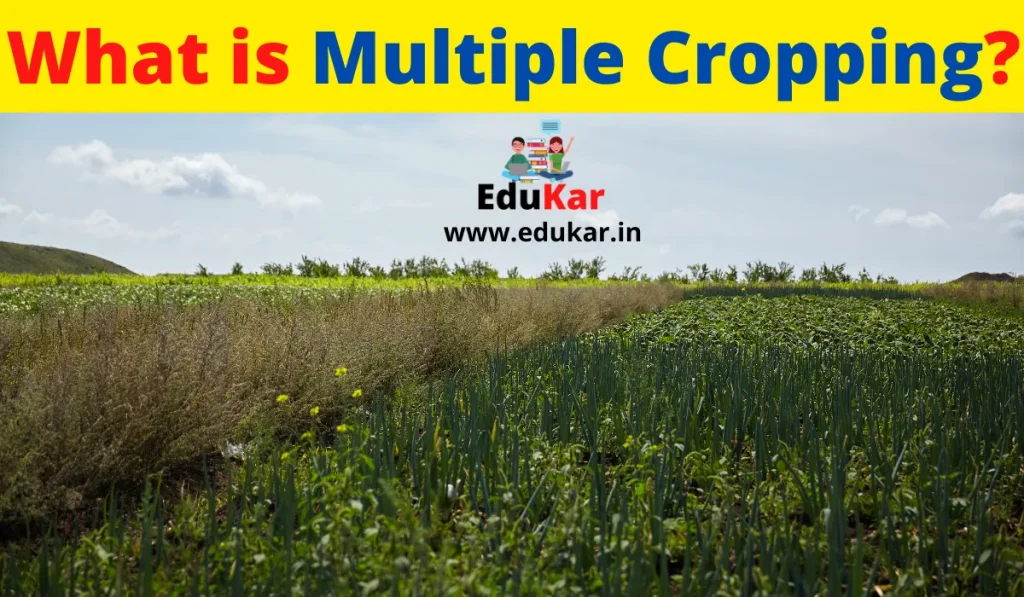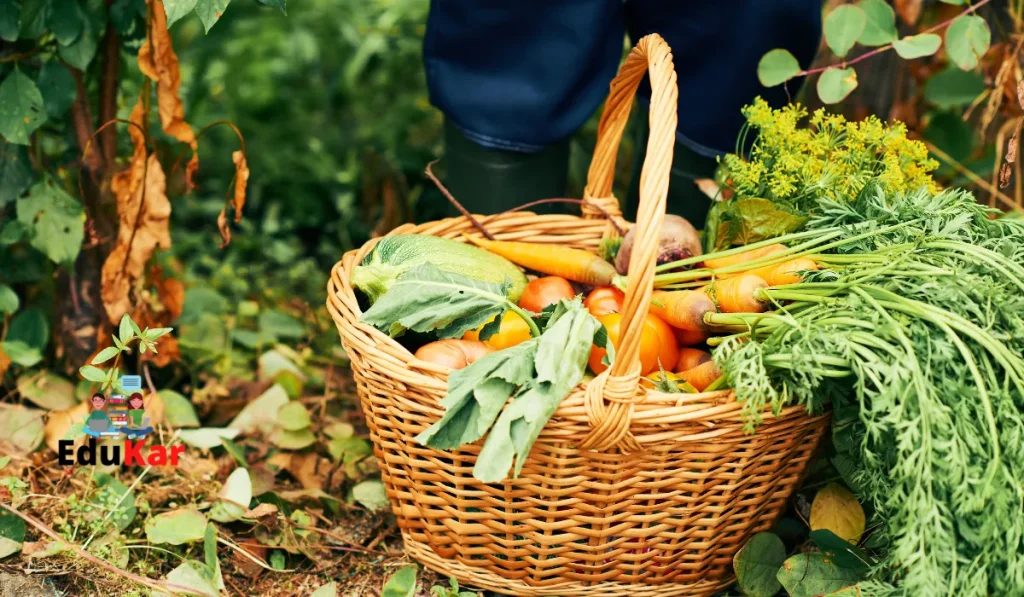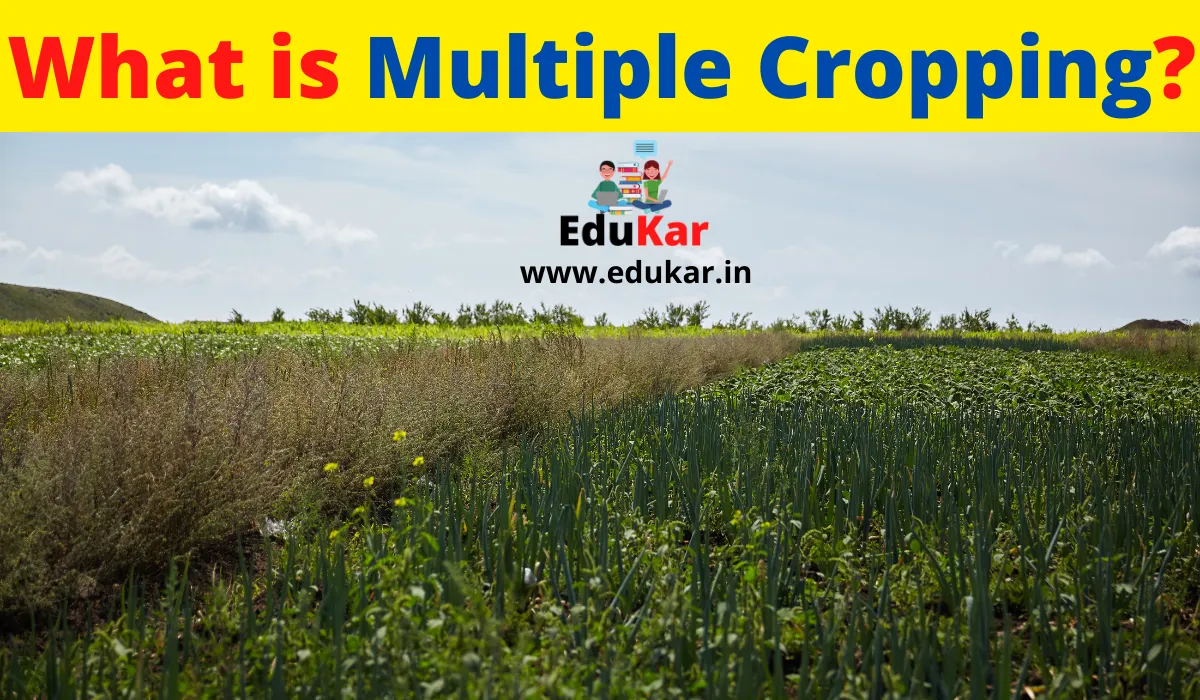In this blog, we are going to learn and gain facts about the concept of Multiple cropping. Not only will we read what it is, but we will gain awareness about the types, advantages/ disadvantages, the reasons why people do this type of activity and much more. There are many types of these systems which we will study about later on. So let’s discuss it in-depth as it is an interesting topic. Technology has enhance to such an extent that there are many types of systems evolving every day.

Before we study more in-depth, We first should to know “What is Multiple Cropping”? These multiple cropping systems are frequently used in the Global South. This cover regions like Africa, Latin America, Asia, etc. It is a mostly practice to use this in these regions, mainly on small farms where they grow to harvest subsistence for families with inadequate assets.
This is one of the aged forms of agriculture that is still widely and frequently used. It include the farming of two or more types of plants on the same piece of land. It is done where the growth cycles of the unlike types intersect for a small part of their time scale.
A easy form of multiple cropping is sequential cropping which is when the second crop is cultivated and grown after the first has been harvested. This type of agriculture may grown-up as intercrops where the growth and yield are finite and restricted to a certain growing season. There are various benefits of multiple cropping.
Lot’s of times, people get mystify between mixed and multiple cropping. Mixed cropping is when two or more crops are planted together on the same land without any fixed ratio. In this, they are mixed and then grown-up, but intercropping is a multiple cropping technique in which the crops are planted closely. They are planted on a piece of land in the same year, and it needs less tools, machinery, irrigation, traditional seeds, and equipment. This is how we can know the difference between mixed and multiple cropping.
There are various examples of such a type of cropping. One such example of multiple cropping is onions and tomatoes. Another main example of multiple cropping can be marigold farming which is carried out together. The marigold support to repel the pests in tomatoes. One more example is that of the American three crop plants, which are maize, beans and cucurbits which are squash and pumpkins. Another example is the farming of gram, wheat and mustard in Northern India. There are various other examples too of multiple cropping because this is a method that is mostly used across the world.

What are the Various Types of Multiple Cropping?
The various types of multiple cropping are:
- Monocropping is the continuous growth of the same type on the same land over a sequence of seasons.
- Sequential cropping is when the crops are planted one after the other, and there is no intersecting phase.
- Intercropping is when two or more crops are planted together on the same land in the same season.
- There are also various types of multiple cropping which every student must know about. When two or more types of plant grow on the same land, it is called Multi-cropping. A part of the growth cycles of the distinct species overlaps.
- Relay cropping is when one type of plant is interplanted with the second before the first reaches adulthood.
What are the Advantages and Disadvantages of Multiple Cropping?
The advantages of multiple cropping are:
- It is greatly favorable to farmers that have small plots and little farming land because they can have full production within the restricted area that they own. They can grow various products at one time, which also helps in lowering their costs of outputs. It will be at higher side if the crops are grown separately.
- It decreases the risk of loss from droughts, pests and diseases. It helps in preserving the fertility of the soil using nitrogen fixation.
The disadvantages of multiple cropping are:
- It is hard to implement new technology on this because it uses the old traditional techniques and system.
- The survival of pests becomes very easy. As if they can’t survive on one crop, they can survive on the another crop and grows-up with it. Pests can move from one crop to the another very easily.
With above disadvantages of multiple cropping, many people do not favor this method.
So in this blog, we have covered a huge part of multiple cropping like “What is Multiple Cropping, Its Types, Advantages and Disadvantages“. We also analyzed the benefits of multiple cropping, also looked at a few examples, and learned much more about it.
Why mixed farming is not so popular in India?
The reason mixed farming is not so popular in India is that farmers in India are not given enough support. One of the main promises of the Indian Government is that it is trying to create an agricultural revolution in India to help farmers become financially and socially independent. Large farms are not popular, because they don’t give the farmers enough incentives. Farmers cannot become financially and socially independent if they are not given a good enough price for their product. Agricultural support in India is a problem because the government only focuses on larger farms and does not subsidize small farmers. The lack of support for small farmers is one of the main reasons for the lack of mixed farming in India.
Difference between rainwater harvesting and multiple cropping
Rainwater harvesting is different from multiple cropping. Rainwater harvesting consists of collecting rainwater and storing it on the property. Multiple cropping refers to planting crops on a property in order to harvest a range of different crops. Multiple cropping is a common practice in agriculture.
Why mixed crop encourage in India?
One of the primary reasons why mixed crop encourage in India is because it is believed to be good for the soil. The mixed crop helps to improve the soil quality and increases the moisture in the soil. Another reason is that mixed crop also has the potential to improve the soil fertility.
Hypothesis of mixed farming
The hypothesis is mixed farming is a solution to the problem of food scarcity. This is because it helps to increase the amount of food produced per unit of land.
Conclusion
When crops are grown in a field, they are harvested and harvested evenly rather than all at one time, which is called multiple cropping or multiple harvesting. Multiple cropping is the practice of harvesting a crop, such as corn, in multiple portions at once. This method of harvesting is more efficient than harvesting crops only one time, as it allows for a shorter time between harvests. Multiple cropping is a common method used in agriculture.
We hope that you enjoyed our article about Multiple Cropping. The video below provides an overview of what the term means. If you have any questions or concerns, please don’t hesitate to reach out to us at www.edukar.in
Thank you for reading, we would love to hear from you!





